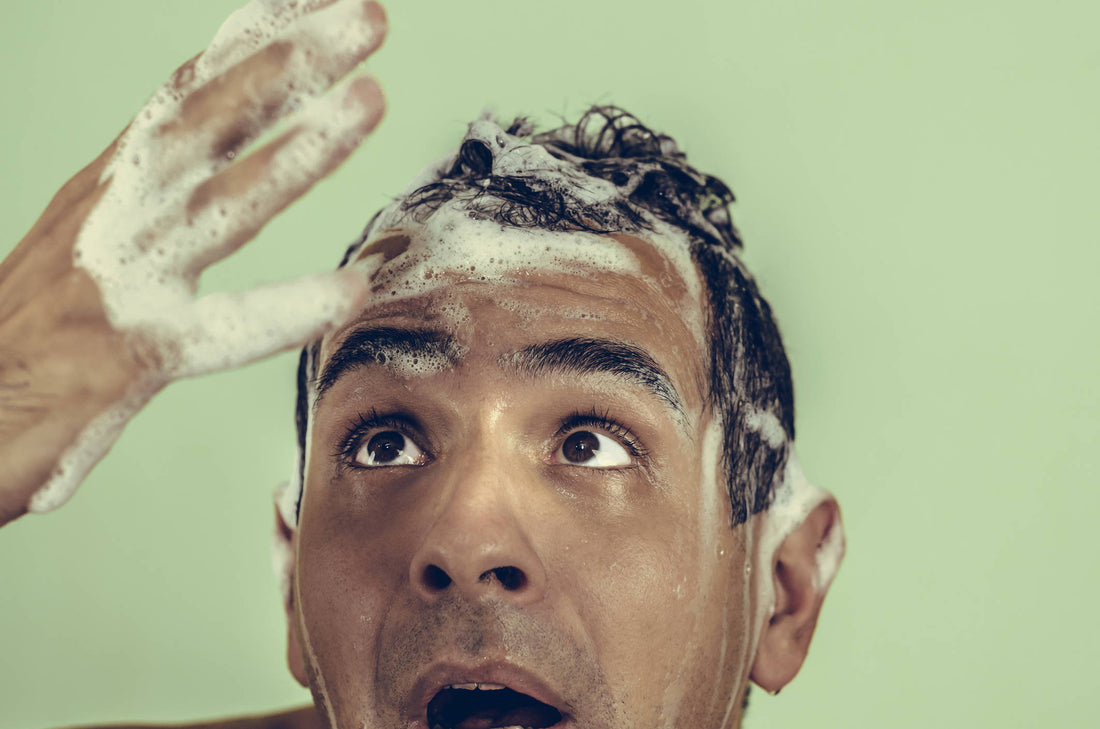Alopecia areata is one of the most difficult to treat hair loss conditions, and it is surprisingly common. People with this condition can lose hair in small patches that are the size of a coin. If it gets severe enough, it can extend to cover their entire head, and it may even develop into complete body hair loss. Let's first explore what causes alopecia areata and then cover how it's best treated and how you can take care of your hair when you have this condition.
What Is Alopecia Areata?
Alopecia areata is an autoimmune condition where the immune system attacks your hair follicles. In autoimmune disorders, the immune system mistakenly identifies your own healthy tissues as foreign bodies. Therefore, it responds by sending antibodies to attack your tissues which can lead to chronic inflammation. Over time chronic inflammation can lead to organ failure, and in the case of your hair, it can lead to hair loss.
This autoimmune disorder is the second most common cause of hair loss in the United States. The first most common cause is androgenic alopecia, also known as male and female pattern hair loss. It is suspected to affect one in every 500 to 1,000 people. Usually, it does not progress to complete baldness. However, a rare form of this disease is alopecia universalis, where your whole body undergoes hair loss.
Causes of Alopecia Areata
We do not know what causes alopecia areata. However, like most autoimmune disorders, this is likely a combination of changes in our genes and environmental toxins. We know there is a strong genetic component to this autoimmune disorder, as many people who have it also have a family member affected by it. Alongside genetic changes and environmental toxins, factors such as emotional stress, physical injury, or illness may also provoke the immune system to respond abnormally.
Diagnosing Alopecia Areata
Often, alopecia areata is diagnosed simply by a doctor looking at your scalp. If they see the telltale signs of coin-shaped bald spots, they may know right away that you have this condition. This quick diagnosis is especially likely if you have a family member with this condition as well. Your doctor may also perform a scalp biopsy to rule out other causes of hair loss, and they may also look at a few hair samples under the microscope to check for fungal infections.
People with autoimmune disorders often have to give blood samples to look for autoimmune processes that are detectable in blood work. For example, your doctor may check an ANA (anti-nuclear antibodies), CRP (C-reactive protein), sedimentation rate, iron levels, thyroid hormones, and testosterone levels.
How Do You Care for Your Hair Daily With Alopecia Areata?
Daily hair care is important, no matter if your hair is healthy or you are struggling with hair loss. But, it is arguably more important if you are suffering from a hair loss condition like alopecia areata. The hair you do have on your head is precious, and with the right hair products, you can keep your hair and scalp healthy.
Depending on your hair type, you will want to wash your hair regularly with a shampoo and conditioner system that:
- Is hypoallergenic
- Revives hair follicles
- Enhances the quality of your hair
- Stimulates new hair growth
- Blocks DHT
- Combats inflammation
- Serves as an antioxidant
- Is hydrating
Finding all of these qualities in one product is challenging. However, you can find all of these mechanisms in the REVITA shampoo and conditioner systems from DS Laboratories. Indeed, it is ranked as one of the best shampoos for alopecia areata.
Along with regular washing, make sure you eat a well-balanced diet and take hair growth supplements, so you have plenty of nutrients to support the hair growth cycle. Additionally, you will also want to remove triggers that may exacerbate inflammation, such as stress, illness, and lack of sleep.
Treating Alopecia Areata
Regrettably, there is no known cure for alopecia areata. However, some treatments may help slow future losses and may even help your hair grow back more quickly.
Treatments
Some treatments are available over-the-counter, whereas others require a prescription from your doctor. Common treatments include:
- Minoxidil
- Nanoxidil
- Corticosteroid creams
- Anthralin (Dritho-Scalp)
- Topical immunotherapy agents that cause an allergic reaction, forcing blood flow to the area.
Oral medications are often prescribed as well, such as corticosteroids and immunosuppressants like methotrexate.
Injections
Steroid injections are commonly used in mild cases where there is patchiness. However, this treatment has to be repeated every few months for hair growth to continue. This method does not prevent further hair loss from happening in other areas.
Phototherapy
Some people benefit from phototherapy with UV rays to help encourage new growth in bald spots. These treatments are usually used along with oral medication.
Why Topical CBD Can Help in Alopecia Areata
Topical CBD in hair care products is relatively new on the market. However, DS Laboratories has created a perfect formulation that taps into the endocannabinoid system that inhibits inflammation at the follicular level, and contains potent antioxidants. Scientific research is only just beginning into the endocannabinoid system, but what we do know is promising, especially in suppressing inflammatory processes that cause problems like hair loss.
Shop the entire REVITA line at DS Laboratories to access cutting-edge dermatological technology to combat hair loss in its most complex forms - even alopecia areata.

